 |
|
|
 |
|
|
 |

Galati City
|
| |
 |
|
|
|
|
VISIT SOME WONDERFUL
PLACES
IN OUR TOWN
ABOUT GALATI CITY
Galaţi city (more than 300.000 inhabitants)
is situated in the Eastern part of Romānia.
Its surface is about 241,5 km2 and it is
located on the left bank of the Danube, at
the confluence of the two rivers: the Siret
and the Prut.
Galaţi city has developed from an ancient
Dacian settlement in one of the Danube's
fords, between the 6th - 5th centuries b.c.,
while preparing the two wars fought by the
Roman Emperor Traian, against the Dacians
between 101-102 and 105- 106, it will know
the influence of the Roman civilization,
because it probably depends on the Roman
camp from Barbosi, an area witch let
christianism spread in Moldavia in the 3rd
century.
Today, Galati city lies on three
terraces: the valley of the city has an
altitude between 5 and 7 meters (the nucleus
of the ancient city, at present being the
center of the city) and the other with more
than 40 meters altitude (the modern city).

Cultural guide marks of Galati are the
testimonies of the urban community evolution
over the time. Galati was considered the
provincial rown with the best theatre
audience after its capitals Bucharest and
Iasi because of the large number spectators
present at the performances of the companies
on tour. The Theatre "Fani Tardini" The
Musical Theatre "Nae Leonard" and The Puppet
Theatre "Gulliver" accomplished their duty
for the people fond of art from Galati as
well as The History Country Museum, The
Visual Sciences Museum or "V.A. Urechia"
Library
Architectural testimonies prove the
existence of this Romanian civil settlement
from the Danube ford through important art
monuments among which "Precista" Church
(17th century), The Episcopal Cathedral
(1906) The Administrative Palace is the work
of the architect Ion Mincu in 1904. The Low
Danube University of Galati is the
continuation of a semi centennial tradition
of academic education.

It is one of the largest economic
centers in Romania, Moldova respectively. Galati
city has a history because it is charged and
placed on the Danube, the most important artery
of trade and European river, the
Rhine-Main-Danube Canal. Economic life developed
around the Naval Shipyard, Port River, around
the Arcelor-Mittal steel plant and port Ore.
Given that
Galati is a gateway to the northeast and
southwest, he was under the influence of
continental air masses less eastern and
southern, almost totally lacking influence
western air that firewall is turned off
Carpathians. The average annual temperature,
calculated over a period of 70 years, is 10
degrees C. The average temperature in summer is
21.3 degrees C. In winter, Galati County wine
over north and north-east of cold air masses the
decrease of temperature between 0.2 degrees C -3
degrees C. The climate is temperate continental.
The Danube’s water front
The waterfront is a green
recreational area for walking, sports competitions
and recitals. Boats moored on the shores of the
Danube are converted into restaurants.
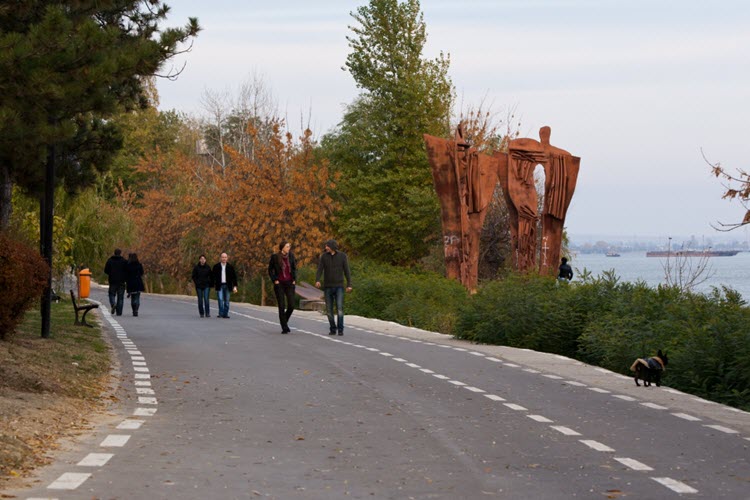
The Restaurant of the Television Tower
Is located at the highest
altitude in Romania and has an international
quotation. Only Berlin and Toronto are located in
greater heights premises. And that is something
unique for our country.
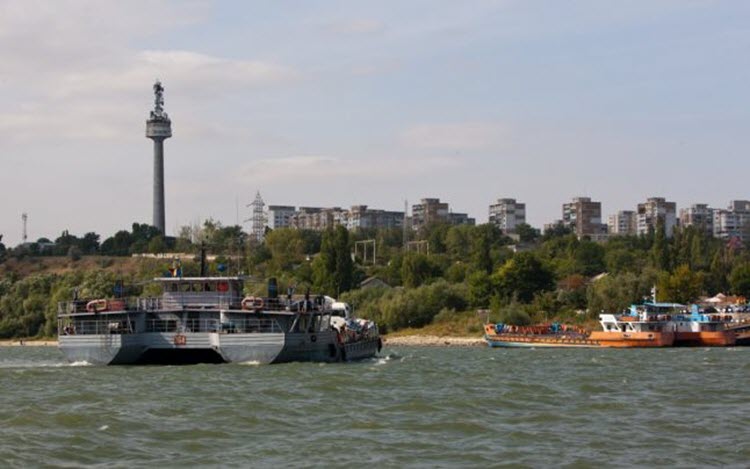
Built between 1906-1917, the
Orthodox Cathedral was built after the plans of
architects Petre Antonescu and Stefan Burcus, who
combined the styles of the time with local
tradition. Cathedral hosts an important treasure of
sacred objects with historical value and outstanding
patrimony.
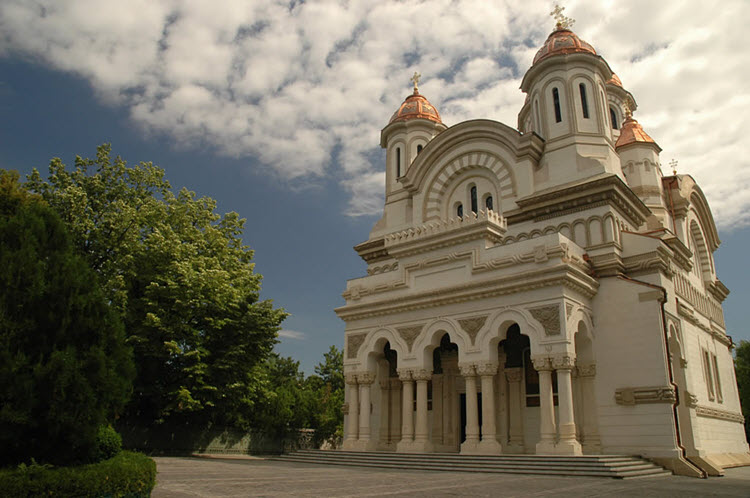
The Botanical Gardens on the
south bank, hosts a 7 metres (23 ft) planetarium.
There is also an aquarium displaying rare species of
the Danube basin and the Mediterranean Sea as well
as exotic fish.
It is built on an area of 2km. It owns collections
of plants from tropical and subtropical areas
(cactuses, euphorbia, palm trees, croton, geranium,
begonias etc.) and the rosary which includes over
200 varieties of roses.

"Precista" Church
(17th century)
Precista
Church is an Orthodox church, built between
1643-1647, during the reign of Vasile Lupu, by Dia
and Serbu, merchants from Braila and by
Constantin Teodor from Galati.
Construction was made out of massive stone and
brick, from the Roman camp of Tirighina - Barbosi.
The church represents a
Moldavian-Wallachian-Transylvanian architectural
style, church was fortified due to the campaign of
Ottoman, Austrian and Russian in Moldova.
In 1711, the church was plundered and burned by the
turks and tartars. Between the periods 1735-1739 and
1769-1774 is devastated by the
Russo-Ottoman-Austrian wars. In 1821, the ottomans
destroyed and robbed the church again.
Church will be restored in 1831, 1953 and 1991.
Today the church is dedicated to the Assumption, is
the oldest historical monument in the city of
Galati.

The museum was inaugurated on
24 January 1939. This was the 80th anniversary of
the union of the Romanian principalities. It is
housed in the residence of Cuza, Galati's chief
magistrate. In 1951, after world war II, scientific
activity resumed at the museum. In 1956, some items
were donated to the Natural History museum and the
museum of art. The finds from Tirighina-Barbosi, are
housed in this museum.
Alexandru Ioan Cuza Memorial House
Cuza's former residence
houses a retrospective display of his life.
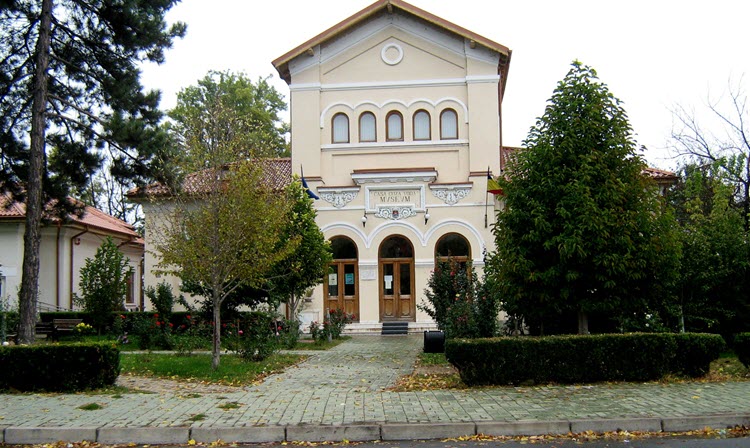
"V.A. Urechia"
County Public Library
(http://www.bvau.ro/index.php)
In Galati is the largest library,
Library Urechia V.A., founded in 1889, with
the first gift card fund Academician Vasile
Alexandrescu Urechia. Library Urechia V.A.
"has over 600,000 titles and over 150
subscriptions to newspapers and magazines.
As regards services, the library has
organized and dispose of the loan department
for adults and children Hall encyclopedic
reference works, specialized reading rooms
with 190 seats, listening and video room,
alphabetical and systematic catalogs,
cardstock, for their own collections,
catalogs printed for Romanian and foreign
books, online catalog monographic
publications, specialized biographical
information, a bibliography of Galati
County. Since 1991, the institution moved to
a complex automation and information
processing, bibliographic databases are
publicly available in 1994 through direct
query terminal personnel or specialist
assistance.
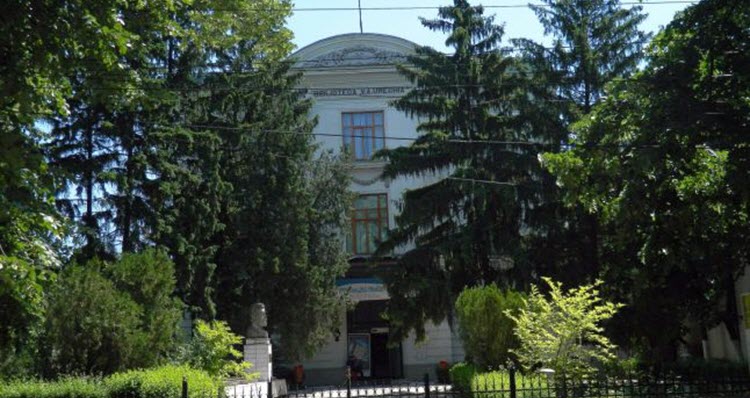
“Dunarea de Jos” University of Galati
(http://www.en.ugal.ro)
The university assumes the role of
civic and cultural centre, meant to
contribute to creating and disseminating
cultural values, to technological and
scientific creation, to supporting all the
economic, educational and social units in
the area where it activates – the “Lower
Danube” Euro-Region – and from all around
the country, through a strong involvement in
the socio-economic environment of the area.
The university offers the members of the
academic community all the necessary
conditions for valorising their skills in
educational activities, through scientific
research and within the socio-cultural
manifestations which they organise.
“Dunarea de Jos” University of Galati, as a
public institution, assumes the mission to
train specialists, at the level of
excellence, in diverse socio-economic
domains, to participate in sustaining and
disseminating science and culture and to
contribute to enriching the national
knowledge patrimony through scientific
research, knowledge and innovation,
permanent learning and interculturality.
“Dunarea de Jos” University of Galati
sustains and promotes its strategies within
the local regional, national and
international community.
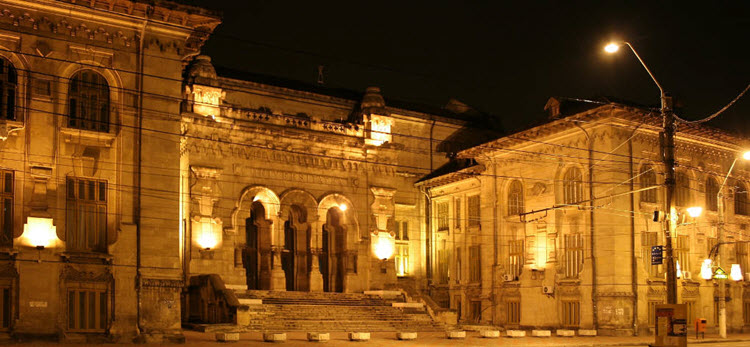
ArcelorMittal
Galati
( http://galati.arcelormittal.com/)
ArcelorMittal is the
world’s leading steel and mining company.
Guided by a philosophy to produce safe,
sustainable steel, it is the leading
supplier of quality steel products in all
major markets including automotive,
construction, household appliances and
packaging. ArcelorMittal is present in 60
countries and has an industrial footprint in
19 countries.
Located in the South-East of Romania,
ArcelorMittal Galati employs about 6,200
people and is the largest integrated steel
plant in the country and leader in
manufacturing metallurgical products, with a
production capacity of 3 million tonnes of
steel. Galati, known as the ‘steelmakers’
city’ is situated on the banks of the River
Danube.
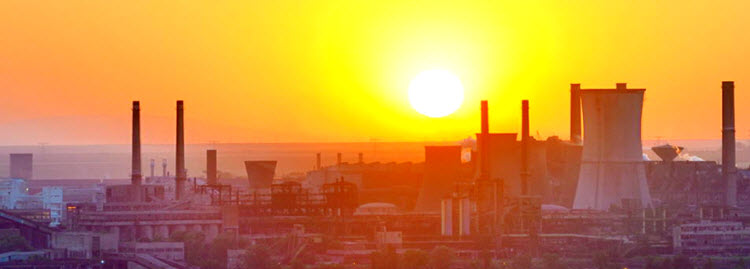
Damen Shipyards Galati
(http://www.damen.com/en/companies/damen-shipyards-galati)
Romania’s Damen Shipyards Galati (DSGa)
is the largest of Damen Shipyards Group’s 32
shipyards, repair yards and related
companies worldwide. While Damen’s
international sales organisation takes care
of product development, self-managed DSGa
has developed into a highly efficient
production shipyard with a significant
output. Since joining the group in 1999, the
yard’s shipbuilding expertise and
closely-managed supply chain have been
behind some of Damen’s most important
deliveries to date, fully representing the
group’s diverse product portfolio. At the
busy yard on the banks of the Danube,
Damen’s unique shipbuilding concept comes to
life. Delivering high quality vessels
worldwide.
Damen Galati has a very diversified
portfolio including anchor handlers, coast
guard vessels, patrol ships/navy vessels,
platform supply vessels and logistic support
vessels, RoRo ships, ferries, dredgers and
barges.
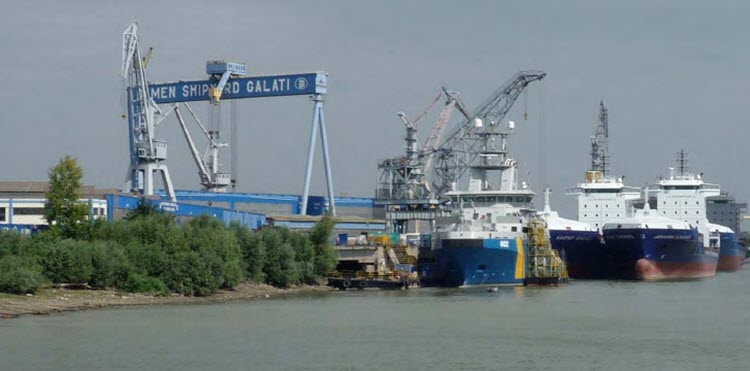
|
|
|
 |
|
 |
|
|
|
|
|
|